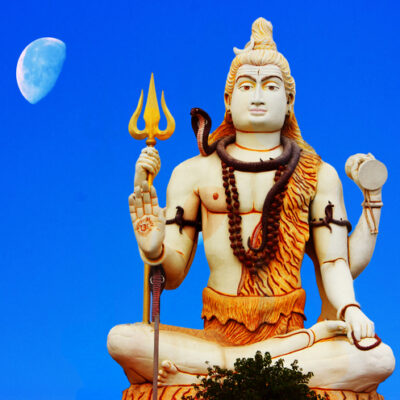Thiruppudaimarudhur Narumboonatha Swamy Temple, Thirunelveli

Address
Thiruppudaimarudhur Narumboonatha Swamy Temple, Thirunelveli
Thiruppudaimarudhur,
Thirunelveli District – 627 426
Phone: +91 – 4634 – 287244
Mobile: +91 – 98596 77070 / 99411 28535
Moolavar
Narumboonatha Swamy
Amman
Rudraksha Gomathi
Introduction
The Narumboonatha Swamy Temple is a revered Hindu temple dedicated to Lord Shiva, located in Thiruppudaimarudhur village, near Ambasamudram in the Thirunelveli District of Tamil Nadu. This ancient temple, which dates back over 1800 years, showcases a blend of architectural styles from various dynasties including the Pandiyans, Cheras, Cholas, and Vijayanagara rulers. The temple is situated in a scenic location, opposite the confluence of the Kadana and Tamirabarani rivers. Covering about 6 acres, the temple’s compound walls extend to a remarkable 575 feet in length.
The temple houses a unique tilted Shiva Lingam, and the presiding deity is Lord Narumboonathar (Shiva) along with Goddess Rudraksha Gomathi. The temple is known for its healing properties, with devotees seeking relief from chronic ailments. The temple complex includes five praharams (circumambulatory paths) and conducts worship six times a day. The temple is especially auspicious for worship on the day of the Pushya star. It is a popular film shooting location, with its bathing ghats and surrounding natural beauty. Additionally, the temple’s Nandavanam is a small bird sanctuary.
Puranic Significance
Surendara Moksha Theertham
King Surendra, who had committed a sin by killing another king in battle, sought salvation from Lord Shiva. After meditating on Shiva, the Lord instructed him to build a temple where his Brahmadanda (sacred staff) would land. The temple was built at the location where the Brahmadanda stopped, and Surendra bathed in the Tamirabarani River, gaining liberation from his sin. This sacred bathing spot is known as Surendara Moksha Theertham, and it is believed that bathing here absolves one from sins, including the severe Brahmahatti Dosha.
Indra’s Liberation from Brahmahatti Dosha
Indra, the king of the Devas, once incurred the Brahmahatti sin by killing the demon Viswarupan, who had become his teacher. Seeking relief from the sin, Indra bathed in the Surendara Moksha Theertham at this temple and performed penance, eventually being absolved of his sin.
The Leaning Posture of Lord Shiva
The temple is known for the unique tilted posture of Lord Shiva’s idol. The legend explains that Karuvur Chithar, a devoted Shiva worshipper, was unable to cross the river due to its strong current. He appealed to Lord Shiva, asking for assistance. Shiva, listening to his plea, leaned slightly to one side, allowing Chithar to cross the river with his thoughts focused on the Lord. This gesture is reflected in the Lord’s posture in the temple.
Shiva’s Appearance to Manu from the Marudham Tree
Sage Agasthiyar requested Manu, the son of Brahma, to visit this sacred place. Upon arrival, Manu found the goddesses Saraswathi, Lakshmi, and Bhoomadevi worshipping Lord Shiva beneath the Marudham (Arjuna) tree. When Manu attempted to destroy the tree, Lord Shiva intervened, and the town was named after the Marudham tree, hence the name Thiruppudaimarudhur.
The Idol of Goddess Gomati
The idol of Goddess Gomati, made of Rudraksha, was brought to this temple from the Komal hills as instructed by a divine voice. This idol plays a significant role in the temple’s worship rituals.
The Temple’s Equivalent to Kasi
Lord Shiva, when asked by the Devas to provide a location on earth equivalent to the sacred city of Kasi, directed his Brahmadanda to the place where the temple stands today, marking it as the earthly equivalent of Kasi.
Beliefs
Devotees believe that worshipping Lord Narumboonathar helps in the removal of obstacles, especially in marriage proposals, and resolves family issues. It is also said to cure prolonged illnesses, bring prosperity, improve academic performance, and foster business growth. Special rituals such as offering silk clothing, bangles, cradles, and sweet porridge to the deity are conducted by devotees to fulfill their prayers.
Special Features
The Narumboonatha Swamy Temple is one of the largest and most beautiful temples in Southern Tamil Nadu. It features a mix of architectural styles from the Pandiyan, Chera, Chola, and Vijayanagara periods. The temple includes five praharams and conducts worship services six times daily. The temple’s architecture is striking, with intricate stone sculptures and a grand entrance.
- Main Deity: Lord Narumboonathar (Shiva), found in a unique leaning posture.
- Mother Goddess: Gomathi Ambal, made of Rudraksha.
- Sthala Vriksha (Sacred Tree): Marudha Tree.
- Sacred Water: Tamirabarani River.
The temple’s outer and inner prakaras (courtyards) are filled with beautiful pillars, sub-shrines, and various deities, including Lord Ganesha, Lord Subramanya, and many others. There is a unique stone idol of Lord Nataraja, the dancing form of Shiva, in the temple’s northeast corner. The idol stands over 2 meters tall, and its design is rich with intricate carvings and symbolism.
Nataraja Idol
One of the temple’s special features is the stone Nataraja idol, which is unusual because most temples have a bronze Nataraja. This majestic idol is located in a spacious sanctum and stands on a rectangular pedestal with detailed carvings. The idol is flanked by Vyakrapada, who was blessed by Lord Nataraja with tiger feet.
Inner Prakara
The inner prakara is adorned with various idols and shrines dedicated to different deities, including:
- Ganesha
- 63 Nayanmars
- Karuvur Siddhar
- Kasi Lingam and Rameswarar Lingam
- Lord Vishnu, Subramanya, and many more.
The main shrine, which houses the Shiva Lingam, is divided into the Moolasthanam (sanctum sanctorum), Ardha Mandapa, and Maha Mandapa. Several sub-shrines and beautiful sculptures enhance the grandeur of the temple.
Gomati Ambal Shrine
The Goddess Gomati is revered in a special shrine within the temple, where devotees offer prayers and seek blessings.
Tamirabarani River
The Tamirabarani River flows behind the temple, with two shrines located on its banks. One shrine is dedicated to Lord Ganesha, and the other is dedicated to the Marudha tree.
References
https://tamilnadu-favtourism.blogspot.com








Century/Period
1800 Years Old
Managed By
Hindu Religious & Charitable Endowments Department (HR&CE)
Nearest Bus Station
Thiruppudaimarudur
Nearest Railway Station
Veeravanallur
Nearest Airport
Madurai






